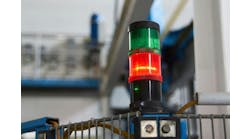While enjoying warmer spring weather, Elmer also noticed that gnats, biting midges and mosquitos were emerging from their winter hiding places. Why not construct some bat houses, a simple construct to welcome those voracious insectivores?
Dusting off an old circular saw, it was apparent its single-phase, AC induction motor was drawing a few inrush-current amps, as the lights dimmed slightly whenever he fired it up. Occasionally, he noticed the lights dimmed when he was gluing and nailing. Maybe it’s his daughter’s hair dryer, he thought, and hoped the circuit breakers would hold on.
There are students of the mind, who theorize that our natural adaptations to avoid predators and capture prey evolved our brains to (almost) instantly assign meanings and make conclusions. A Wired magazine article from 2014 quotes the work of a psychologist, Tom Stafford, who studies typos. “We take in sensory information and combine it with what we expect, and we extract meaning,” he stated in “What’s up with that: why it’s so hard to catch you own typos”.
Even reading this publication, our minds immediately consume the written words without “seeing” the sequence of black symbols on a white background. These are important and useful “meanings” that we’ve learned. So, we “see” what our minds say is there, while “reality” might elude us. While missing a typo in a column or a tweet is disheartening for the author, one also hopes our quick minds won’t preclude discerning important information.
In a process plant, we routinely confront signals we wish someone noticed earlier. When the spare pump spins up, we ask, did the discharge pressure become noisier? Maybe there’s not a functioning bourdon-tube gauge that could have provided immediate feedback—if the operator was looking.
It’s more difficult to see increased noise on a digital display, including DCS graphics intended to mimic analog gauges. Sampling intervals or filtering can also obscure a potentially meaningful signal. If the level in a distillation column begins oscillating, does anyone investigate whether tower differential pressure might be correlated, or seek evidence of tower overloading, tray damage or jet flooding? Maybe we wouldn’t be as surprised, when the column is finally opened for maintenance, and the structure packing (column internals) is a jumble with shards showing up in downstream equipment.
Alarm management presents another conundrum. It’s best practice to only have alarms that require timely operator action—everything else is either a “no alarm” or perhaps an “alert,” which is categorized as potentially of interest but requires no operator response. The alarm prioritization and response manual documents likely causes, corrective actions and consequences if no action is taken. We train operators that “all alarms require a timely response,” and that silencing and acknowledging an alarm means they’re certifying that corrective action was taken.
But plant managers have mixed feelings—they need operators to look beyond alarms for abnormal conditions, especially those that may have no sensor or instrumentation attached. Now with alarm management disciplines and dynamic alarms (suppressing redundant or meaningless alarms automatically based on process state), we risk denying information to the intuitive operator, who could hear meaning in all the chaos.
A routine review of alarms that are operator-suppressed can reveal whether a measurement has become meaningless, or might be masking a condition or failed measurement, where the original purpose isn’t clear to novices. Having added a continuous pH measurement to the acid pump’s seal fluid, it’s because we once revealed a failure by trial-and-error, or a fault that went undetected long enough to cause a costly repair and/or outage. But such measurements can also lull us into a false sense of security—if they flat-line for months or years, we risk people forgetting about them and their meaning. Conversely, if we add an alarm for a sketchy diagnostic—a load change in a discrete output—it may become a nuisance that’s suppressed and ignored.
Elmer, to his credit, wasn’t content to dismiss his dimming lamps as a foregone conclusion. The cycles were more persistent and regular than he realized. The weaker than usual stream at the kitchen faucet led him to the problem. His well pump was cycling on and off. When he isolated his buried irrigation system, the source—a subterranean leak—was revealed.
Like Elmer, we can avoid waste and mishaps by following the threads of similar “diagnostics” to reveal their root causes.





